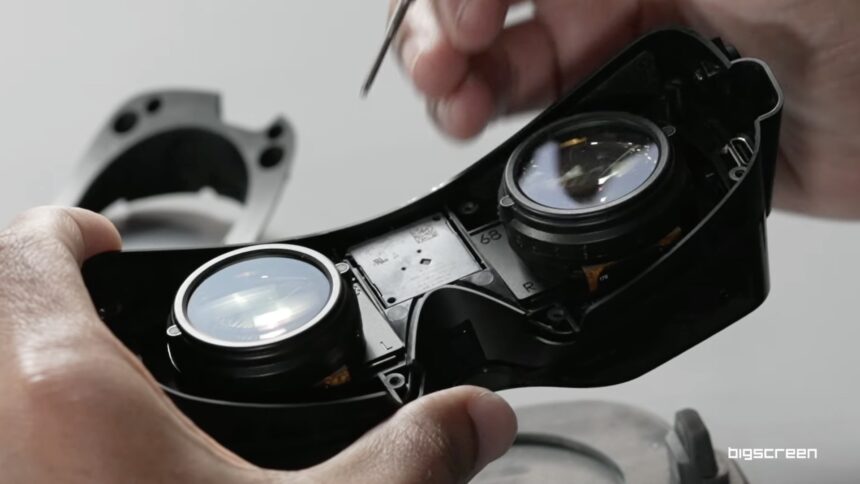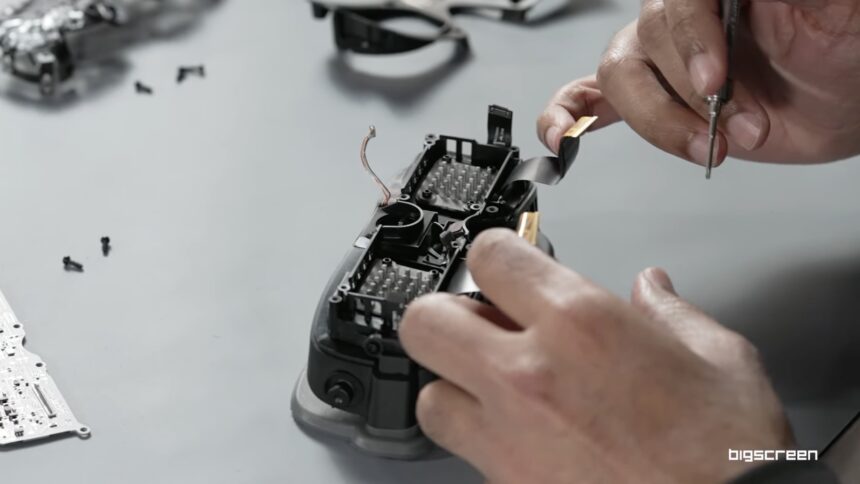Take a look inside the world's smallest VR headset
The Bigscreen Beyond VR headset is tiny. An official teardown video reveals some interesting technical details.
"One of our core values was that every gram matters," says Bigscreen CEO Darshan Shankar.
Weighing in at around 170g, the Bigscreen Beyond is several times smaller and lighter than Meta Quest 2. But, unlike that device, the Beyond only runs on a PC. Its small form factor and light weight are made possible in part by the fact that it doesn't have its own integrated SoC or battery, and relies on external tracking accessories.
Still, the PC VR headset is an impressive piece of engineering, as Shankar's teardown video shows. The CEO disassembles the device piece by piece and then quickly reassembles it. Shankar says that no glue is used. This should make repairs easier.
An LED provides a cyberpunk look
The IPD of the lenses is customized for each customer and is fixed rather than adjustable. By eliminating a sliding mechanism and moving parts, the weight has been significantly reduced. Shankar shows the customized IPD plates, including individual values (see picture below). One drawback of this design is that it makes the headset less shareable, as people with a very different IPD will get a blurry image as a result.

The custom-made IPD plates of the size 68. | Image: Bigscreen
Removing the plastic shell reveals the front, which is covered in tiny photodiodes needed for SteamVR's spatial tracking. The CEO advises against 3D printing your own housing for the time being, as the plastic shell is carefully calibrated for the SteamVR tracking.
The mainboard is small and thin, and contains a very bright LED that serves a single aesthetic purpose: to give the device its unique cyberpunk look. "We really want to break away from that typical black, shiny box and kind of get into this crazy new aesthetic for VR," says Shankar. In terms of weight, the LED does not make much of a difference: it weighs just 0.1 grams.
Large heat sinks for the displays
The CEO also shows off the high-quality microphones, the hydrophobic fabric that has been placed in various places, and the only moving part of the device: a mini-fan that cools the components.

Good to see in this picture: the display's heat sinks. | Image: Bigscreen
Among the heaviest components of the VR headset are the heat sinks of the OLED microdisplays. The screens have to be extremely bright to compensate for the high light absorption of the custom-made pancake lenses. Therefore, the tiny displays (each only 1 inch big) are likely to get very hot. "We put a lot of engineering effort behind this to optimize for cooling performance while also keeping weight in mind," says Shankar.
The CEO points out that the device shown is pre-production unit and that minor details are subject to change.
Bigscreen Beyond will be launched in the third quarter of 2023. More information about the Bigscreen Beyond as well as a first impression by Tested can be found in the linked article.
Note: Links to online stores in articles can be so-called affiliate links. If you buy through this link, MIXED receives a commission from the provider. For you the price does not change.